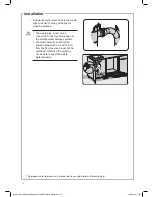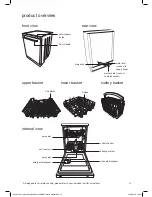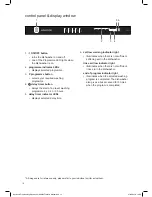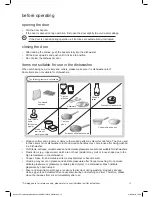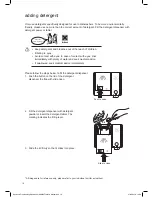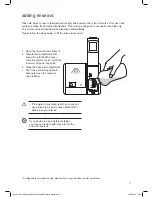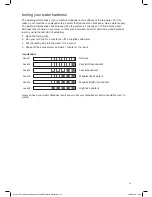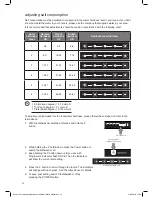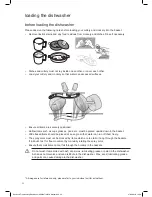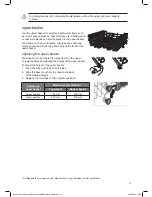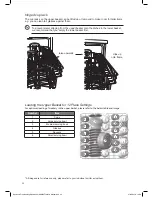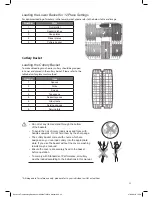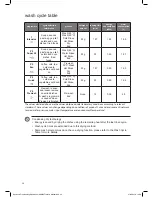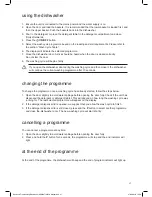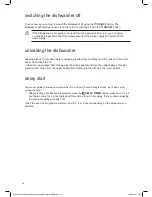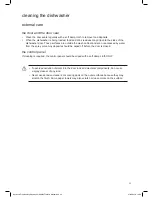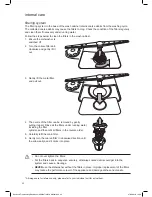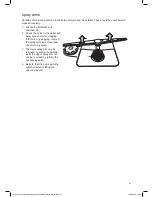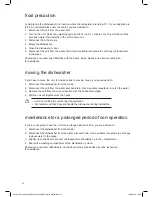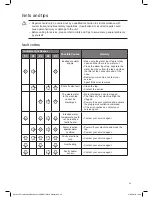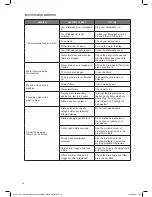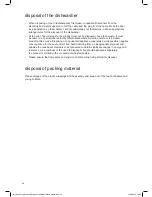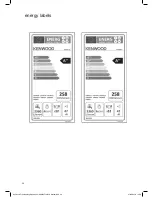
26
Condensing dry technology
• Energy is saved by drying the dishes using the remaining heat after the last rinse cycle.
• Wash cycle times are extended due to this drying method.
• Some wash programmes do not have a drying function, please refer to the Wash Cycle
Table for more details.
wash cycle table
programme
cycle selection
information
process
detergent
amount
running time
(min.)
energy
consumption
(kWh)
water
consumption
(L)
1
Intensive
Soups, sauces,
pasta, eggs, pilaf,
potato and oven
dishes, fried foods.
Wash (45°C)
Wash (65°C)
Cold Rinse
Hot Rinse
Dry
End
25g
127
1.55
16.5
P2
Super 50
Soups, sauces,
pasta, eggs, pilaf,
potato and oven
dishes, fried
foods.
Wash (65°C)
Warm Rinse
Hot Rinse
End
25g
50
1.35
12.7
P3
Eco
Coffee, milk, tea,
cold meats,
vegetables not dried
on.
Prewash
50°C Wash
Hot Rinse
Dry
End
25g
187
0.90
12.0
P4
Quick
Coffee, milk, tea,
cold meats,
vegetables not dried
on.
Wash (40°C)
Cold Rinse
Hot Rinse
End
25g
30
0.90
12.4
P5
Prewash
Prewash to rinse
and loosen residue
on soiled dishes.
A wash programme
is needed when
Prewash is finished.
Pre-wash
End
None
15
0.02
4.5
The values declared above are the values obtained under laboratory conditions according to relevant
standards. These values can change depending on conditions of product’s use and environment (network
tension, water pressure, water input temperature and environment temperature).
Kenwood Freestanding Dishwasher KDW60T18/X18 Manual.indd 26
07/06/2018 15:59

